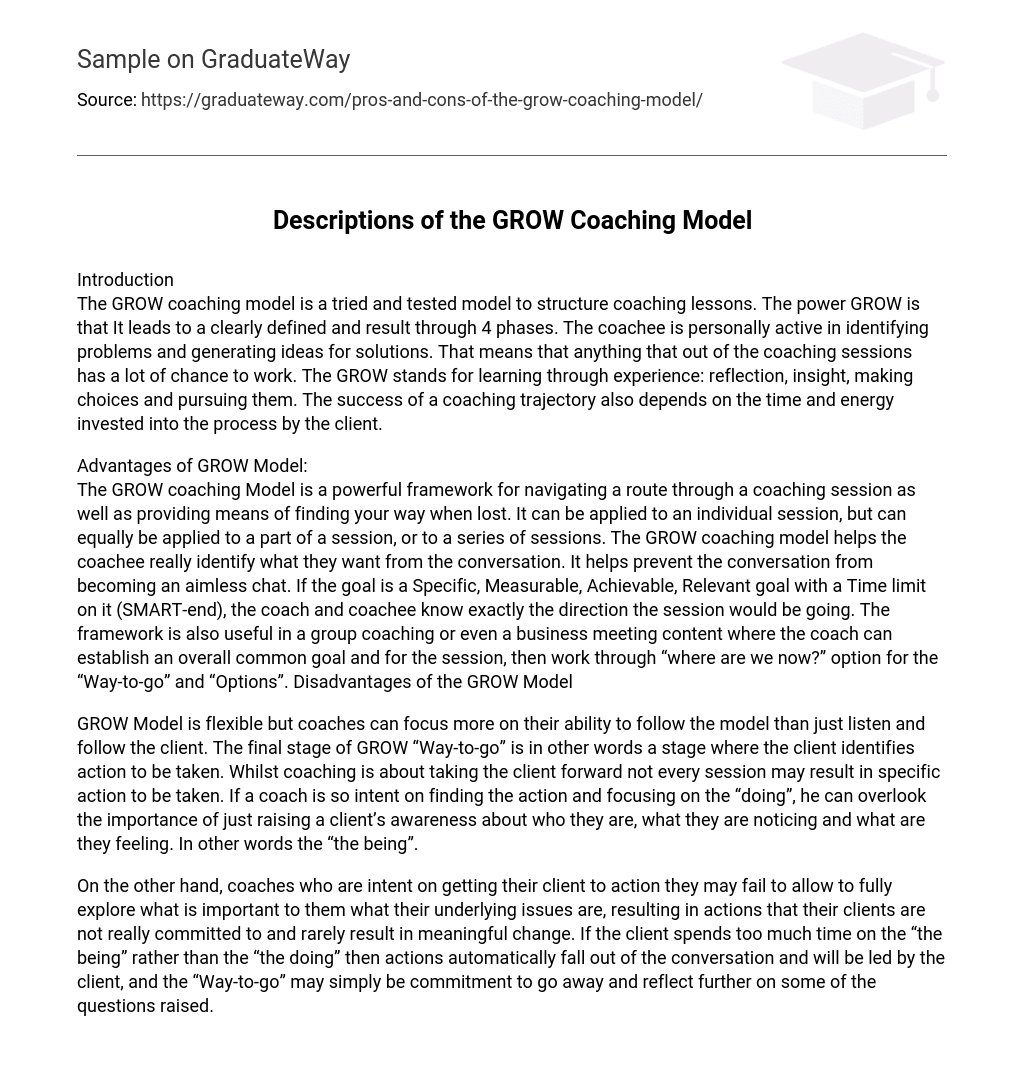Introduction
The GROW coaching model is a tried and tested model to structure coaching lessons. The power GROW is that It leads to a clearly defined and result through 4 phases. The coachee is personally active in identifying problems and generating ideas for solutions. That means that anything that out of the coaching sessions has a lot of chance to work. The GROW stands for learning through experience: reflection, insight, making choices and pursuing them. The success of a coaching trajectory also depends on the time and energy invested into the process by the client.
Advantages of GROW Model:
The GROW coaching Model is a powerful framework for navigating a route through a coaching session as well as providing means of finding your way when lost. It can be applied to an individual session, but can equally be applied to a part of a session, or to a series of sessions. The GROW coaching model helps the coachee really identify what they want from the conversation. It helps prevent the conversation from becoming an aimless chat. If the goal is a Specific, Measurable, Achievable, Relevant goal with a Time limit on it (SMART-end), the coach and coachee know exactly the direction the session would be going. The framework is also useful in a group coaching or even a business meeting content where the coach can establish an overall common goal and for the session, then work through “where are we now?” option for the “Way-to-go” and “Options”. Disadvantages of the GROW Model
GROW Model is flexible but coaches can focus more on their ability to follow the model than just listen and follow the client. The final stage of GROW “Way-to-go” is in other words a stage where the client identifies action to be taken. Whilst coaching is about taking the client forward not every session may result in specific action to be taken. If a coach is so intent on finding the action and focusing on the “doing”, he can overlook the importance of just raising a client’s awareness about who they are, what they are noticing and what are they feeling. In other words the “the being”.
On the other hand, coaches who are intent on getting their client to action they may fail to allow to fully explore what is important to them what their underlying issues are, resulting in actions that their clients are not really committed to and rarely result in meaningful change. If the client spends too much time on the “the being” rather than the “the doing” then actions automatically fall out of the conversation and will be led by the client, and the “Way-to-go” may simply be commitment to go away and reflect further on some of the questions raised.





